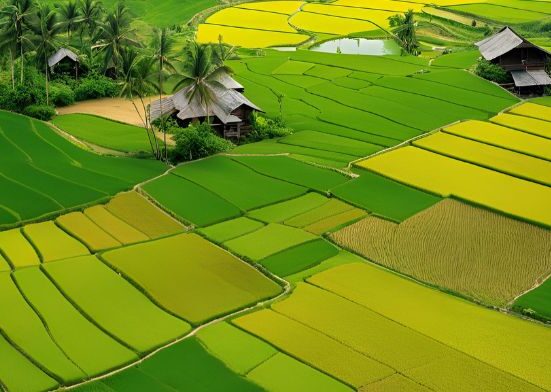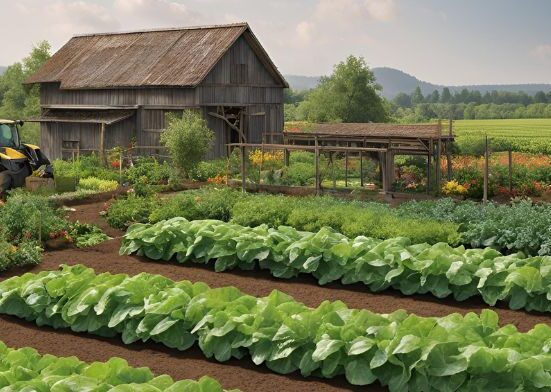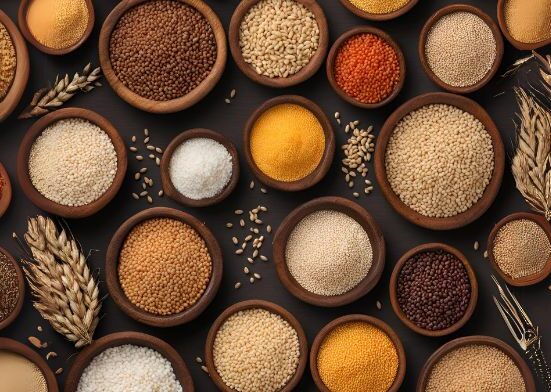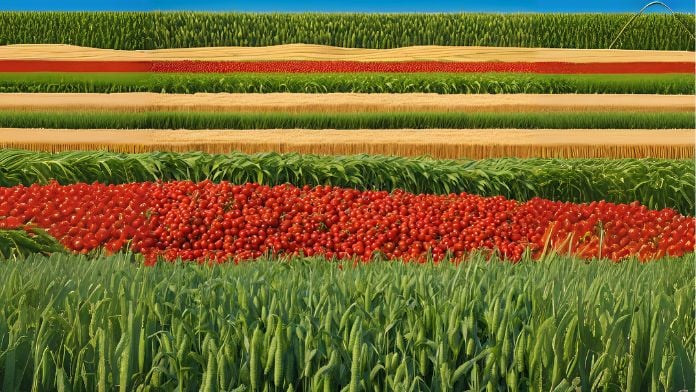Cash crops are agricultural products grown primarily for sale rather than personal consumption. They play a crucial role in global economies by generating revenue, supporting industries, and providing employment. Common examples include coffee, cotton, sugarcane, and tobacco. While cash crops boost economic growth, they also present challenges such as market dependency, environmental concerns, and food security risks. Sustainable farming practices, including crop diversification and eco-friendly techniques, can help maximize benefits while minimizing negative impacts. Understanding the role of define cash crop is essential for developing resilient agricultural systems and ensuring long-term sustainability in farming communities worldwide.
What are Cash Crops?
Crops are plants humans cultivate for various purposes, including food, fiber, fuel, and other resources. These plants are grown systematically in agricultural fields, gardens, or greenhouses to meet human needs and support livelihoods. Crops are classified based on their purpose, season, and life cycle. Food crops, such as rice, wheat, and maize, are grown to feed populations worldwide, forming the foundation of human diets. cash crop meaning, like coffee, cotton, and sugarcane, are cultivated primarily for commercial purposes, generating income for farmers and contributing to global trade.Fiber crops, including cotton and jute, produce textiles and other materials, while oilseed crops, such as soybeans and sunflowers, provide edible oils and biofuels.
cash crops can also be categorized by the season they grow in. For instance, kharif crops (e.g., rice and maize) are planted during the monsoon season, how to adjust a rainbird sprinkler head while rabi crops (e.g., wheat and barley) are grown during winter. Additionally, perennial crops, like fruit trees, yield produce over several years, whereas annual crops, like vegetables, complete their life cycle in one growing season.Crops are essential for sustaining life, driving economies, and supporting industries, making them a cornerstone of global agriculture.
Which Cash Crops Are Most Popular?

Cotton, corn, sunflowers, wheat, and sugar cane are common cash crops in Texas. The Office of the Texas Governor states that other common cash crops include peanuts, feed grains, fruit, pecan groves, olives, and vineyards. Clicking on this link will cause a popup message.
Cotton is a significant crop in the US, especially in Texas. This cash crop is adaptable because it benefits both the textile and agricultural industries.Another vital crop that grows well in warmer climates is sugar cane, which supplies sugar domestically and abroad.definition cash crop from sunflowers help produce sunflower oil, bird seed, and a popular snack food worldwide. There are benefits to this crop, such as its increased heat tolerance, which
Types of Crops
Crops are cultivated plants grown to meet human and animal needs. Depending on their function, they can be divided into many sorts, expanding seasons and life cycles. Here’s an overview of the primary types of crops:
Food Crops
Food crops are grown to provide sustenance. Examples include cereals (wheat, rice, maize), pulses (lentils, chickpeas), fruits (apples, bananas), and vegetables (potatoes, tomatoes). These cash crop in a sentence form the backbone of human diets and ensure food security.
Cash Crops
Cash crops are grown primarily for sale rather than direct consumption. Examples include coffee, cotton, sugarcane, and tea. These crops play a vital role in economic development and global trade.
Fiber Crops
Fiber crops are cultivated to produce materials used in textiles and other industries. Typical examples are cotton, jute, and flax, essential for manufacturing fabrics, ropes, and nets.
Oilseed Crops
Oilseed crops are grown to extract oils for cooking, Cover Crops cosmetics, and biofuels. Examples include soybeans, sunflowers, mustard, and groundnuts.
Medicinal and Aromatic Crops
These crops are cultivated for their therapeutic and aromatic properties. Examples include turmeric, aloe vera, lavender, and peppermint.
Plantation Crops
Plantation crops are grown on large estates, often in tropical regions. Examples include cocoa, rubber, and coconut.
Seasonal Crops
- Kharif Crops: Grown during the rainy season (e.g., rice, maize).
- Rabi Crops: Cultivated in winter (e.g., wheat, barley).
- Zaid Crops: Grown between Kharif and Rabi seasons (e.g., watermelon, cucumber).
Understanding these crop types helps optimize agricultural practices and meet diverse human needs effectively.
10 Facts About Profitable Texas Cash Crops
Texas, with its diverse climate and extensive farmland, is one of the most agriculturally productive states in the US. Its vast land area and strategic location make it a hub for cultivating cash crops that support local and international markets. Here are 10 detailed facts about profitable Texas cash crops:
Cotton is the Dominant Cash Crop in Texas
Cotton has been a cornerstone of Texas agriculture for centuries. The state produces over 40% of the nation’s cotton, with the majority grown in the High Plains region. Cotton farming supports local economies and global textile industries, generating billions annually. Advanced irrigation systems and drought-tolerant varieties have further bolstered cotton’s profitability in Texas, even in arid regions.
Corn is Versatile and Profitable
Corn is one of Texas’s most widely grown crops, providing essential raw materials for food, livestock feed, and biofuel industries. Texas farmers benefit from corn’s high demand, What is Crop Rotation especially in the ethanol market, which uses corn as a primary ingredient. The ability to grow corn in both irrigated and non-irrigated areas adds to its profitability.
Sorghum Thrives in Drought-Prone Areas
Sorghum is a drought-resistant crop cash, making it ideal for regions in Texas with limited rainfall. This hardy grain is used for livestock feed, ethanol production, and human consumption. Texas consistently ranks as a leading sorghum producer in the US, benefiting farmers from its adaptability and lower production costs.
Wheat Supports Global Food Security
Wheat is a significant cash crop in Texas, contributing to producing essential food items like bread, pasta, and cereals. The state’s wheat industry is also a key player in the export market, meeting international demand. Texas farmers grow winter and spring wheat, diversifying their income sources and ensuring year-round profitability.
Pecans: A High-Value Specialty Crop

Pecans are native to Texas, and the state ranks as one of the top producers in the US. Known as the state tree, pecans are a high-value crop with growing demand for their use in snacks, desserts, and health foods. With proper orchard management, pecan trees can yield consistent profits for decades, making them a long-term investment for farmers.
Rice Production Flourishes in Southeast Texas
Southeast Texas, with its rich soil and ample water supply, is a key region for rice cultivation. Rice is a staple food for millions worldwide, making it a valuable export crop. Texas rice farmers benefit from state-of-the-art irrigation techniques that enhance yields and ensure consistent quality, maintaining the crop’s profitability.
Grapes Drive the Expanding Texas Wine Industry
The Texas Hill Country has emerged as a major player in the US wine industry thanks to its ideal climate for grape cultivation. Grape farming supports both small-scale vineyards and large wineries, generating significant revenue. The growing popularity of Texas wines in national and international markets has made viticulture a profitable cash crop venture.
Soybeans Provide Diverse Income Streams
Soybeans are a versatile crop grown for their oil and protein-rich meal, used in cooking, livestock feed, and biodiesel production. Texas farmers benefit from the crop’s multiple revenue streams and ability to thrive in diverse soil conditions. The global demand for soybeans ensures consistent market opportunities.
Hay is Vital to the Livestock Industry
With Texas being the largest cattle-producing state in the US, hay is an indispensable cash crop. It serves as a critical feed source for livestock, especially during dry seasons when grazing options are limited. Farmers benefit from the steady demand for hay, which provides a reliable income stream throughout the year.
Fruits and Vegetables Offer High Returns
Texas’s warm climate supports the cultivation of high-value fruits and vegetables, including melons, citrus, tomatoes, and peppers. These crops cater to local and export markets and fetch premium prices due to their quality. Regions like the Rio Grande Valley are known for their abundant fresh produce, contributing significantly to the state’s What is Rapeseed agricultural revenue.
Texas’s diverse range of cash crops highlights its agricultural richness and economic importance. By leveraging advanced farming technologies and sustainable practices, Texas farmers continue to profit from these crops while supporting local and global food systems.
How Do Cash Crops Build Climate Resilience?
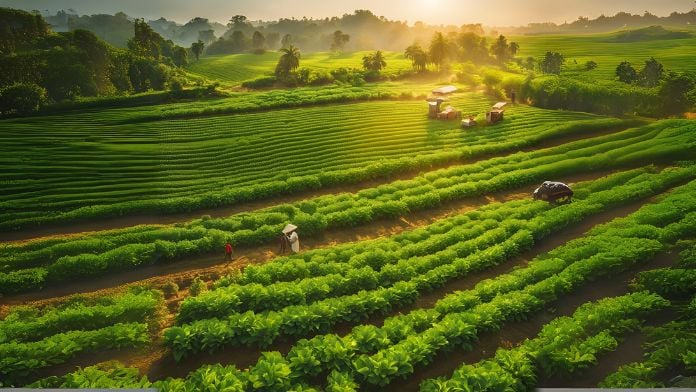
Cash crops are vital in enhancing climate resilience, particularly by diversifying farming practices and strengthening agricultural systems. When farmers grow various crops, they are less dependent on the success of a single crop. This diversification acts as a safety net against economic shocks caused by climate events, such as droughts or floods. It reduces the risk of total crop failure and improves food security, ensuring a stable food supply even during environmental stress.Moreover, adopting drought-tolerant crops and advanced agricultural techniques, such as water harvesting and using climate-resilient seed varieties, equips farmers to better adapt to the challenges posed by climate change. These methods help conserve water, optimize yields, and protect crops in unpredictable weather conditions, ensuring long-term sustainability.
Empowering rural women with access to drought-tolerant seeds, tools, and training further strengthens climate resilience. For instance, providing female farmers with resources like polytunnels to shield crops from extreme weather enables them to maintain healthy yields despite environmental changes. This improves their livelihoods and enhances their roles within their communities. Additionally, these farms can act as small carbon sinks, reducing land degradation and purifying the air, which helps mitigate the local effects of climate change.Implementing such integrated solutions is essential for addressing rural poverty and malnutrition while fostering sustainable, resilient livelihoods. By adopting these practices, communities can better prepare for climate challenges and build a more secure and prosperous future.
Future Prospects for Cash Crops
A combination of global demand, technological advancements, and the pressing need for sustainable farming practices shapes the future of cash crops. As the world navigates climate change, shifting market dynamics, and population growth, cash crops will be critical in ensuring economic stability, food security, and environmental sustainability. Here’s a look at what the future holds for cash crops:
Increasing Demand for Sustainable Farming
Consumers are becoming more eco-conscious and demanding products grown sustainably. This trend drives the adoption of organic farming, reduced chemical use, and carbon-neutral agricultural practices. Farmers growing cash crops like coffee, cocoa, and cotton are exploring eco-friendly certifications, which can command higher prices in global markets.
Technological Integration
The future of cash crop farming is heavily reliant on technology. Precision agriculture, drones, and AI-powered tools enable farmers to monitor crop health, become a farmer optimize irrigation, and predict yield outcomes. These innovations help reduce waste and enhance productivity, making cash crops more profitable and sustainable.
Development of Climate-Resilient Crops
Agriculture has significant difficulties from climate change, but advancements in biotechnology are paving the way for climate-resilient crops. Drought-tolerant, pest-resistant, and high-yield varieties of cash crops such as sorghum, cotton, and rice will be essential in safeguarding farmers’ livelihoods and ensuring food security.
Expanding Global Markets
Global trade opportunities for cash crops continue to grow. Demand for crops like these is driven by Asia, Africa, and the Middle East, which are emerging markets. Soybeans and corn and specialty products such as avocados and almonds. This expansion offers farmers and exporters new avenues for profitability.
Diversification of Cash Crops
Farmers are moving away from relying on single cash crops to cultivating diverse crops. This reduces economic risk and increases resilience to market fluctuations and climate challenges. Diversification into high-value crops like medicinal plants, niche fruits, and essential oils is gaining momentum.
Role in Renewable Energy
Cash crops are increasingly contributing to the renewable energy sector. Bioethanol is made from crops like corn and sugarcane, while biodiesel is primarily from soybeans and sunflowers. As the demand for sustainable energy increases, these crops will become increasingly important in the global energy landscape.
Strengthening Local Economies
Cash crops remain a lifeline for rural economies, providing millions of farmers worldwide with jobs and income. Cash crops will help bridge the gap between rural and urban economic development with continued infrastructure, training, and market access investment.
Focus on Value Addition
We will also see a shift towards value-added products in the future. Instead of exporting raw cash crops, farmers and agribusinesses will focus on processing and packaging them locally. For example, turning raw coffee beans into branded roasted coffee or raw cotton into finished textiles can significantly increase profitability.
Digitalization of Agriculture
E-commerce platforms and blockchain technology transform how cash crops are marketed and traded. Farmers can now sell directly to consumers, ensuring fairer prices, while blockchain provides transparency and traceability in supply chains.
Policy and Investment Support
Governments and international organizations are prioritizing investments in cash crop production through subsidies, training programs, and financial support. Policies promoting sustainable practices and access to global markets will further enhance the prospects of cash crops.
Conclusion
Cash crops are pivotal in shaping economies, supporting livelihoods, and ensuring food security worldwide. Their ability to generate income, drive trade, and adapt to diverse climatic and market conditions makes them indispensable in agriculture. With the growing emphasis on sustainability, technological innovation, and climate resilience, the future of cash crops looks promising.
By embracing diversification, investing in advanced farming practices, and prioritizing eco-friendly production, farmers can unlock new opportunities and safeguard their operations against environmental and economic challenges. Furthermore, empowering rural communities and fostering value-added processing will ensure that cash crops remain a driving force for development and sustainability.Cash crops have the potential to thrive in the face of climate change and shifting consumer demands, contributing to a more resilient and equitable agricultural system for future generations.
FAQ
What are cash crops?
Cash crops are grown primarily for sale rather than personal consumption. Examples include cotton, coffee, sugarcane, and tobacco. These crops generate income for farmers and contribute significantly to national and global economies.
How do cash crops affect small farmers?
Cash crops can provide income opportunities but may also increase financial risks. Price fluctuations, market dependency, and production costs can challenge small farmers, making diversification and support programs essential for stability.
Which countries rely heavily on cash crops?
Countries like Brazil (coffee, soybeans), India (cotton, tea), and Ghana (cocoa) depend on cash crops for economic growth, employment, and export revenue, making agriculture a crucial sector in their economies.
Do cash crops impact food security?
While cash crops boost economies, over-reliance on them can reduce local food production, leading to food shortages or higher prices. A balanced approach, integrating food and cash crops, helps maintain food security.
How can governments support sustainable cash cropping?
Governments can promote sustainable cash cropping through subsidies, research on eco-friendly farming methods, fair trade policies, and farmer education programs, ensuring long-term economic and environmental benefits.



